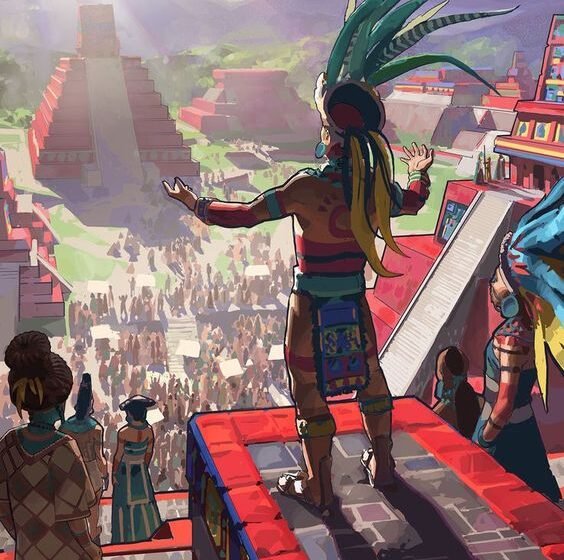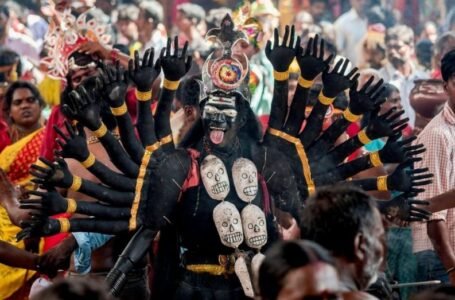The Mayan Revival: Resurgence of Maya Culture and Identity

One of the most important Mesoamerican Civilization, The Maya Civilization. It is known for its advancement in writing, art and architecture. They have it all, the pyramids, temples, palaces etc. It spans across from the ancient times to the early modern era and stands out for various achievements in different fields. They have developed the most sophisticated script in Pre-Columbian America. From monumental structures to detailed glyphs, the Maya left an inedible mark on history showcasing their creativity and lasting influence across the ages.

The Maya civilization flourished across different regions which included, southeastern Mexico, Guatemala, Belize, Honduras and El Salvador. Today, the descendants of the Maya are collectively referred to as the Maya people and have exceeded over 6 million individuals. They speak almost 28 surviving Mayan languages and largely inhabit the same territories as their ancestors, this helps them to preserve their cultural heritage and traditions.
The civilization that went on for ages ranged across distinct periods, cultures and societal evolution that left an indelible mark on Mesoamerican history. The archaic period, has dated before 2000 BC and is also the beginning of the Maya society and the advent of agriculture and the emergence of early settlement. After that came the Pre-classic period that dates from 2000 BC to 250 AD. It transitioned into a complex society that cultivated staple crops such as Maize, beans and chili peppers.as time went by, the civilization started to take shape, like the monumental architecture and the early usage of hieroglyphic writing. Coming to the late Pre-classic era, it saw the rise of major urban cities which helped in signifying the consolidation of Maya power and influence. However, the pinnacle of this civilization came during the classic era. It went from around 250 AD to 9th century. The city-states flourished, which were interconnected by extensive trade networks. A few that were notable were Tikal and Calakmul, they were fierce rivals vying for dominance. But the period of 9th century ushered in turmoil as it was marked by political upheaval, warfare and the abandonment of the cities which even lead to significant population movement.

After which came the post-classical period, in which Chichen Itza rose to prominence and along with that the K’iche` kingdom expanded its reach in the Guatemalan Highlands which sustained the Maya cultural resilience in between the shifting geopolitical landscape. in the 16th century, the Spanish explorers arrived that lead to the demise of indigenous autonomy. The Spanish empire colonized Mesoamerica which resulted in the fall of last bastion of Maya resistance in the year 1697 which marked as the end of this huge civilization.
The archeologist began exploring the Mayan sites in the 1830s, this helped in gradually revealing glimpses of the culture. In the mid 2oth century, they were able to decipher an uncovered portion of the Mayan writing system which told us about the religious beliefs and cultural practice of the Mayan people. These people were deeply devoted to their religion, their belief in nature gods including deities like sun, moon, rain and corn formed the cornerstone of their spiritual world. Along with their religious connection, there was also a profound development of mathematics and astronomy which represented a pinnacle of intellectual development. Their advanced understanding of positional notation and the concept of zero revolutionized their mathematical thoughts. Their astronomers charted the measured time and had a calendar of 260 days and the long count, marking time from a zero date in 3113 BCE. Contrary to earlier notions, the Mayan inscriptions revealed a society marked by warfare, political intrigue and ritualized violence. Dynastic rulers waged brutal campaigns against rival city-states. They even took the aristocrats captive for gruesome sacrificial rituals. Torture, mutilation and human sacrifice were considered to be religious practices and they also believed that it ensured fertility, it appeased to gods and stave off cosmic chaos. The rulers also acted as intermediaries between the people and the gods, engaging in ritual blood-letting and self-torture to maintain cosmic harmony. The once idealized image of the Mayan society gave way to a more nuanced understanding of their society, it was characterized by the complexities of power, religion and cultural practices that shaped their world.

When we talk about the present-day situation of the Maya community, we find that these community are diverse, reflecting a rich tapestry of languages, traditions, and ways of life. Modern Maya communities can be classified into various groups based on their language and their geographical location. From the Yucatec Maya of Mexico’s Yucatan peninsula to the Lacandon in southern Mexico, each group maintains its unique identity and cultural practices. In Guatemala, we find K’ichean-speaking people in the highlands, while in Chiapas, Mexico, the Tzotzil and the Tzeltal people add to the cultural mosaic. Additionally, the Cholan people in the north contribute to the rich tapestry of the diversity of Maya culture.
One of the most important-thing about the Mayan culture is its agriculture. Different communities cultivate staple like corn, beans and squash, sustaining themselves through traditional farming practices. Villages are often said to be organized around central areas, but much of the daily life revolves around looking after the crops on family farms. While their traditional clothing remains prevalent, especially among men and women, men commonly wear modern attire. Even though, the traditional crafts such as spinning and weaving are in decline, some people from the community still engage in these activities, creating items for sale and also to preserve their identity. Most of the people follow Catholicism, but in the recent years, many have embraced Evangelical Protestantism. Despite all these religious influences, Maya spiritually often intertwines with their beliefs which helps in creating a unique blend of faith and culture. Here, Christian celebrations like masses and saint’s days coexist with ancient domestic rituals that showcases a harmonious mixture of old and new.

There is a lot about their rich culture and their heritage, but as time goes by they have started facing modern day challenges like economic disparities, environmental degradation and along with that they face social changes as well. However, the community is resilient and adapts to new realities while preserving their traditions and identity. There have been initiatives to preserve their culture and have a sustainable development. They stand as a vibrant testament to rich and enduring legacy. With their diverse languages, agricultural roots, and cultural heritage, they embody the resilience of indigenous culture in the face of change. They try to navigate the complexities of the modern world while honoring their past and embracing the future. They want their culture to remain alive and that their generations should witness it.

To conclude, the Maya civilizations is a wonderful example of ingenuity, resilience and cultural richness of the Mesoamerican societies. They have left and indelible mark on society by their richness in agriculture, achievements in arts, astronomy, language and mathematics. Through centuries of development, they have now starting to adapt to this change of environment and political landscape that creates a vibrant tapestry of cultural diversity that continues to inspire awe and administration. It is evident that their contributions extend far beyond the boundaries of time and geography. They serve as a source of inspiration to the generations to come by having such elaborate history. In essence, the Maya civilization serve as a reminder of the enduring power of human creativity, resilience and quest for knowledge.


